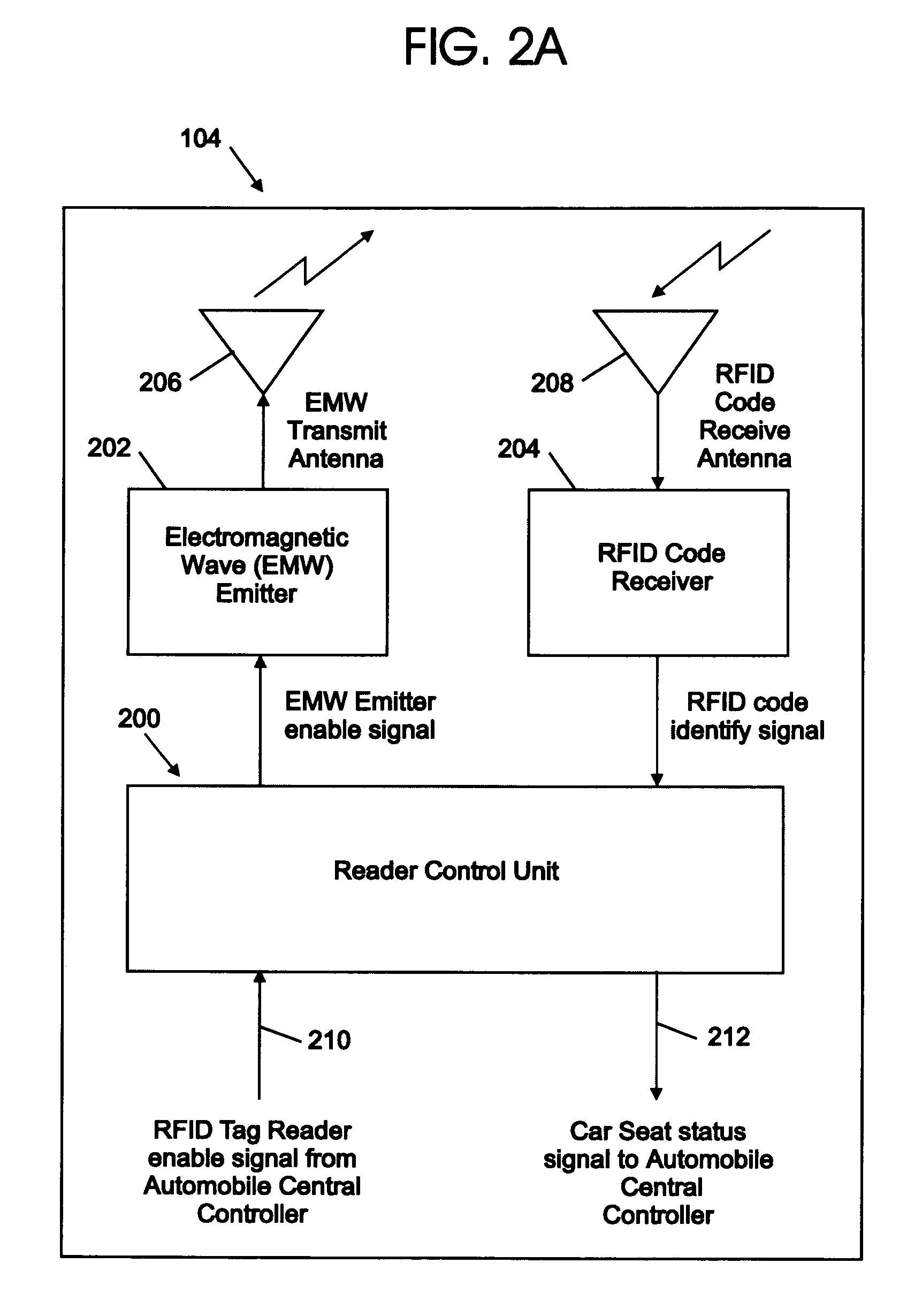Wireless system to detect presence of child in a baby car seat
a car seat and child detection technology, applied in child seats, pedestrian/occupant safety arrangements, instruments, etc., can solve the problems of child or infant injuries, and the operator pays a fine for the infraction, so as to reduce the cost of the rfid components and reduce the cost of detection and corrective systems , the effect of reducing the cost of injuries
- Summary
- Abstract
- Description
- Claims
- Application Information
AI Technical Summary
Benefits of technology
Problems solved by technology
Method used
Image
Examples
Embodiment Construction
[0020]FIG. 1 shows a pictorial schematic of a vehicle 100 armed with a child safety protection system according to the teachings of the present invention. The child safety protection system monitors occupancy of baby seat 102 and takes corrective action, such as sounding an alarm, unlocking doors or rolling down windows if a child is left in the vehicle. The child safety protection system includes a RFID tag reader 104 deployed in the roof of the vehicle. RFID tag device 106 is mounted to the baby seat 102. Because RFID tag device 106 is mounted to the baby seat 102 it may be transported and used in different vehicles provided with a compatible RFID tag reader 104. It should also be noted that the RFID tag reader can be mounted in other locations in the cabin other than the roof. This is possible because RFID tag reader 104 need not be in line with RFID tag device 106 in order to exchange information. It is only require for the RFID tag reader to be within the close proximity around...
PUM
 Login to View More
Login to View More Abstract
Description
Claims
Application Information
 Login to View More
Login to View More - R&D
- Intellectual Property
- Life Sciences
- Materials
- Tech Scout
- Unparalleled Data Quality
- Higher Quality Content
- 60% Fewer Hallucinations
Browse by: Latest US Patents, China's latest patents, Technical Efficacy Thesaurus, Application Domain, Technology Topic, Popular Technical Reports.
© 2025 PatSnap. All rights reserved.Legal|Privacy policy|Modern Slavery Act Transparency Statement|Sitemap|About US| Contact US: help@patsnap.com



